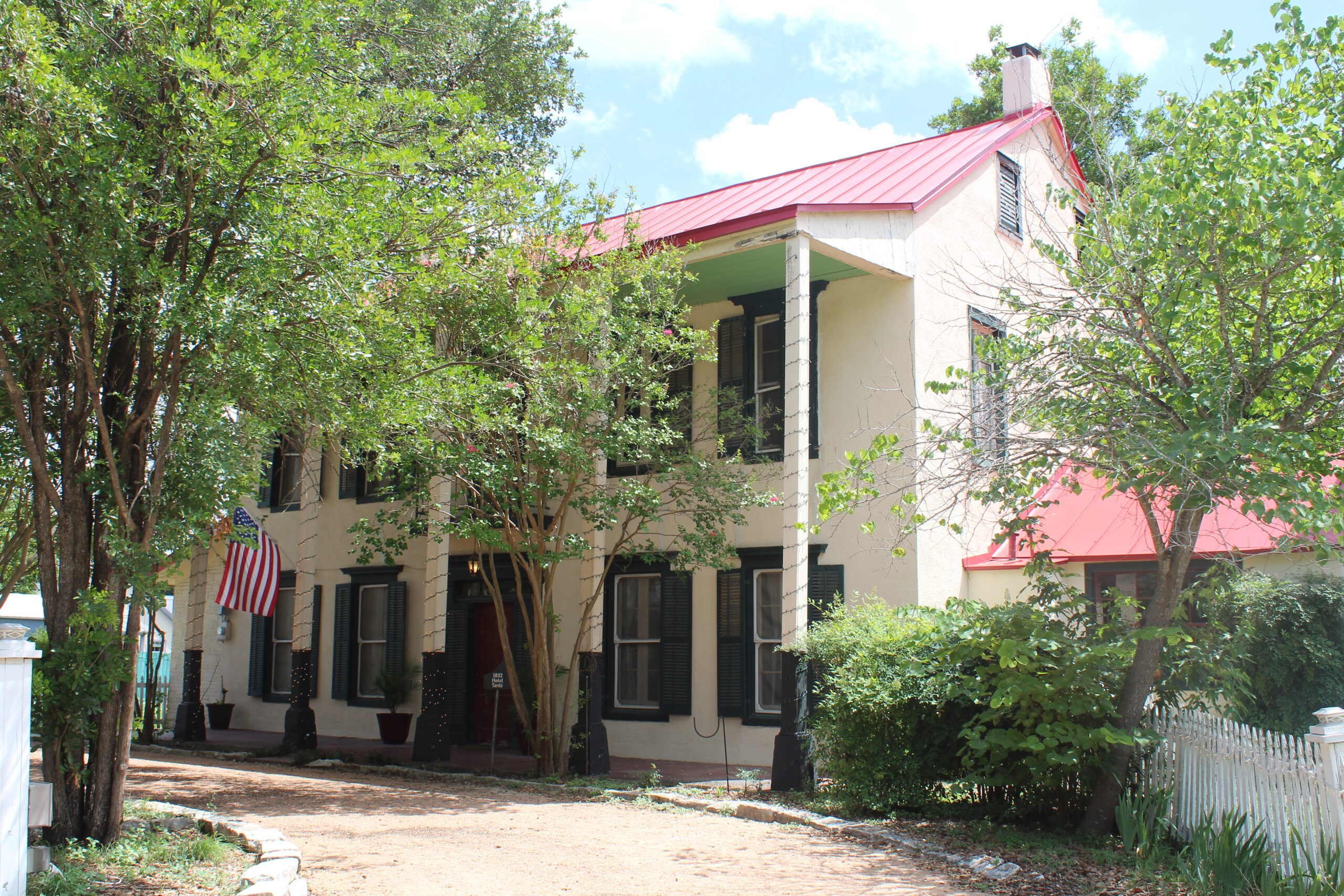
Tarde Hotel
1852
Victor Tarde built the Tarde Hotel in 1952. Born in France in 1792, Tarde was a member of the Young Guard of Napoleon Bonaparte.
He successfully worked in merchandising in Lyons, France; Rio de Janeiro, Brazil and New Orleans until 1849 when bankruptcy steered his path to Castroville in 1850. Henri Castro was said to be an old friend.
Past hotel guests include Abner Doubleday, J. B. Hood, Earl Van Dorn and Robert E. Lee. Amelia Castro lived at the hotel following her husband Henri’s death in 1865.
The Tarde functioned as a hotel from 1852 to 1894 and was described in Fredrick Law Olmstead’s book, “A Journey Through Texas,” from his April 1853 visit to Castroville.
Tarde and his wife Clarisse entertained lavishly and filled the hotel with mahogany furniture. Clarisse died in 1863 and Victor in 1886.
Dr. John T. FitzSimon purchased the hotel in 1898 and the hotel remained in the family until 1990. In 2025, Joshua and Pennie Robertson own the hotel and use it as their personal residence.
The Tarde Hotel is a two-story, stuccoed stone structure. Its primary volume is capped with a side gable, metal standing seam roof and is fronted with a second-story porch. The porch is supported by wooden posts and spans the entire length of the primary volume. The porch roof is a continuation of the hotel’s roof, although it is a different slope.
The hotel boasts a symmetrical, five-bay facade with a central door on both floors. The door at ground level is framed by sidelights and a transom window covered by shutters. The upper story door once opened to a pronounced balcony. The casement windows are protected by screens and are framed by functional shutters.
The second level features four bedrooms and a bathroom. Historically, the rooms did not have the walls that they do today as they once were cloth. The street-level features a hallway that runs from the front door to the back door, with a stair scaling to the second floor. The back door, like the front, is framed by sidelights and a transom window. The exterior has a front gabled portico leading to this back door. On one side of the hallway is a two-room parlor; one of the two rooms has been converted into a bedroom. On the other side of the hallway sits a dining room. Above the two floors rests an attic that hosted the bedroom of previous owners.
The secondary volume also has a metal, standing seam roof but is instead hipped. Its front and back facades both have two bays with two openings on each floor. The door on the front facade’s first floor is shielded by an awning. This part of the structure once housed the hotel’s servants and consisted of two floors as indicated by the wood still present in the stone walls. Its ceiling reveals the original wooden roof structure.
Today, the room is double-height and receives light through its four original casement windows in the room’s upper register and four double-hung windows on the lower facade. The two primary volumes are connected by a lower gabled volume that currently hosts the kitchen. The kitchen highlights the stone walls and wooden ceiling. A wooden, double-hung window is framed by cabinets on the front facade, and a bayed addition with two windowed doors and two vertical windows occupying the back.
Other additions include a shed addition on the primary volume’s side that extends beyond the plane of the back facade. It has a stone veneer and holds an additional bathroom.